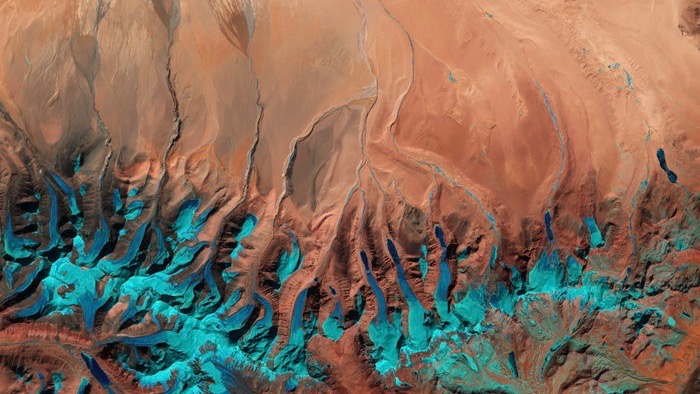
ESA released this image as its Earth observation image of the week on June 17, 2016. It’s a Sentinel-2A satellite image of the Tibetan Plateau. ESA said:
The Tibetan Plateau was created by continental collision some 55 million years ago when the north-moving Indian Plate collided with the Eurasian Plate, causing the land to crumple and rise. And rise it did. With an average elevation exceeding 4,500 meters (14,800 feet) and an area of 2.5 million square kilometers (about a million square miles), it is the highest and largest plateau in the world today.
The plateau is also the world’s third largest store of ice, after the Arctic and Antarctic. In recent years, rising temperatures have caused rapid melting.
Part of the Himalayas is visible along the bottom of the false-colour image, with the distinct pattern of water runoff from the mountains. At the end of these rivers and streams we can see the triangle-shapes of sediment deposits – alluvial fans – formed when the streams hit the plain and spread out.
One large alluvial fan is visible in the upper-central portion of the image, while smaller ones can be seen on the left.
Alluvial fans are subject to flooding, and these areas are increasingly at risk as climate change taking its toll on the world’s glaciers causes accelerated melting.
Bottom line: A Sentinel 2A image of the southern-central edge of the Tibetan Plateau.











